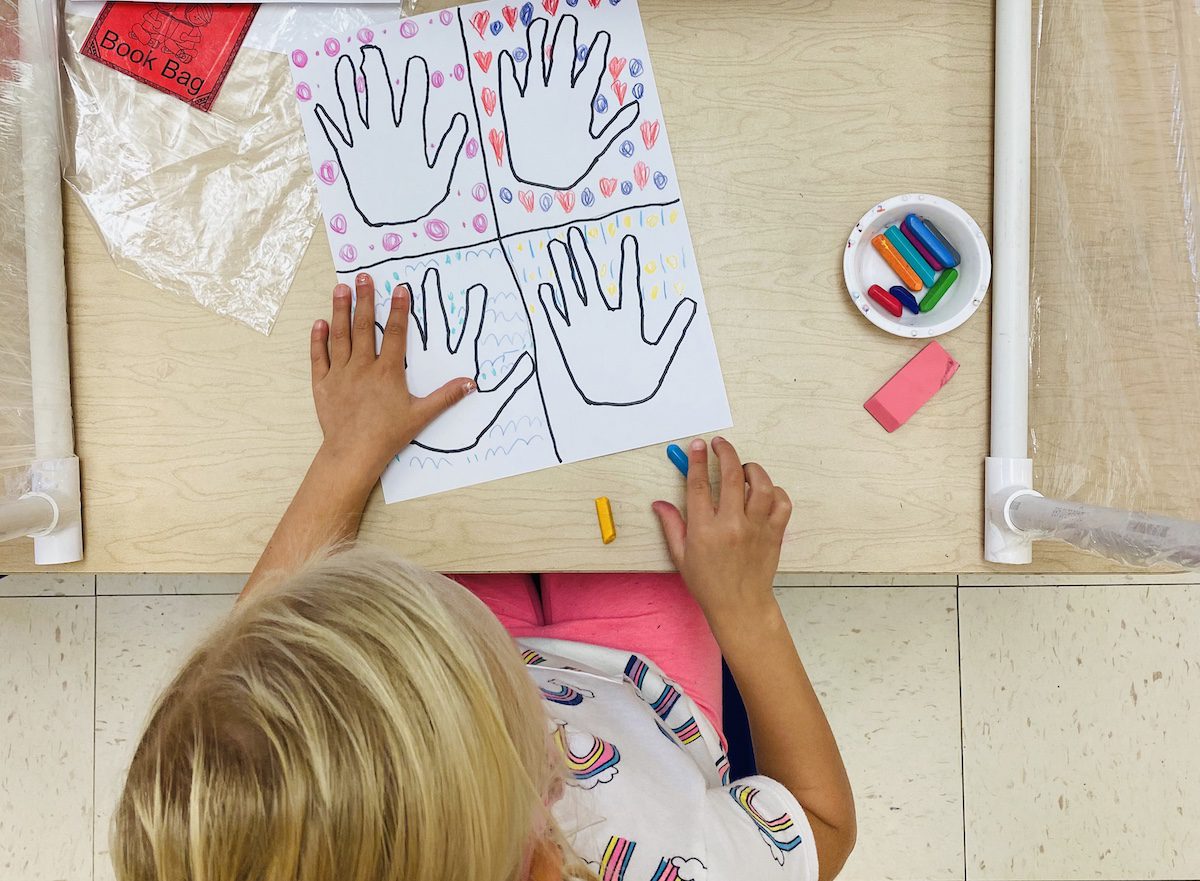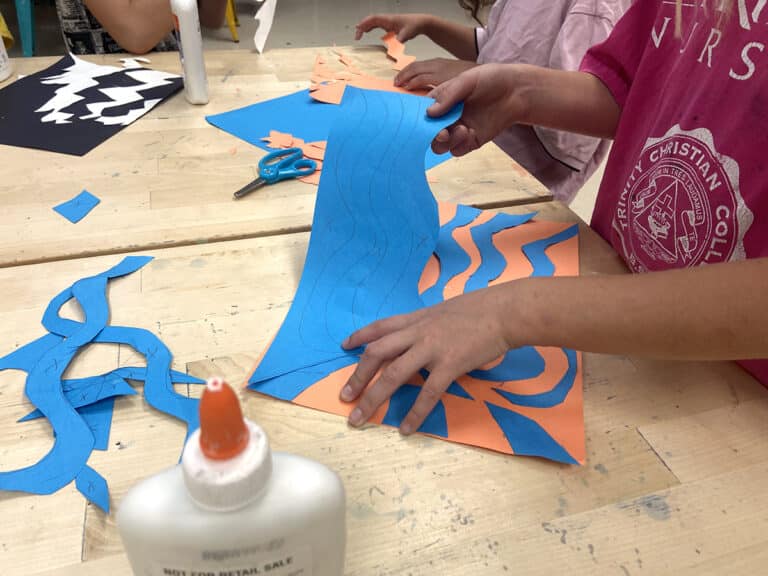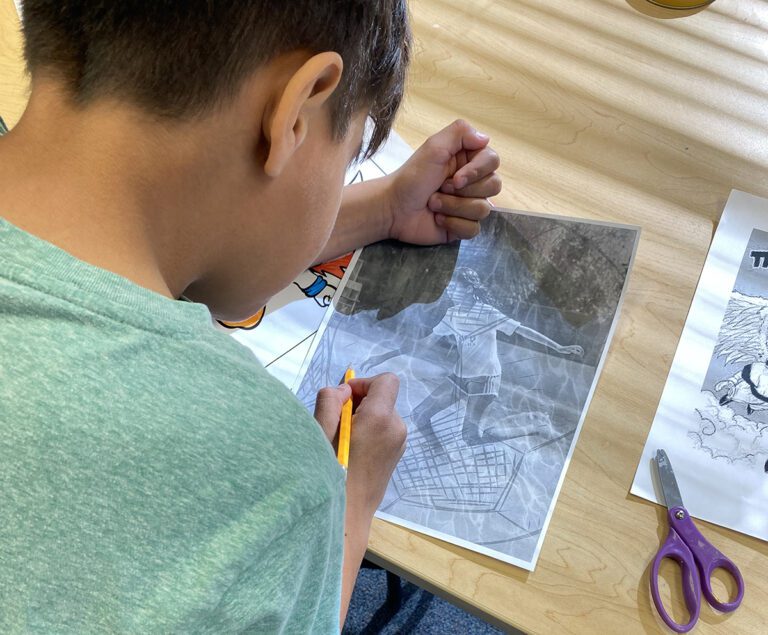Return to Learn with The Art of Education University
Teaching our students how to understand and process their emotions is incredibly important now, more than ever. Art teachers are perfectly equipped to start conversations about identifying, expressing, and accepting all kinds of emotions with lessons specifically geared toward Social-Emotional Learning.
What is Social-Emotional Learning (SEL)?
Social-Emotional Learning (SEL) is the process through which children and adults understand and manage emotions, set and achieve positive goals, feel and show empathy for others, establish and maintain positive relationships, and make responsible decisions.
There are 5 main components of Social Emotional Learning:
- Self Awareness: Understanding yourself
- Self Management: Controlling impulses, stress, and emotions
- Social Awareness: Understanding the perspectives and feelings of others
- Relationship Skills: Communication, Cooperation, and Conflict resolution with others
- Responsible Decision Making: Identifying problems and brainstorming solutions
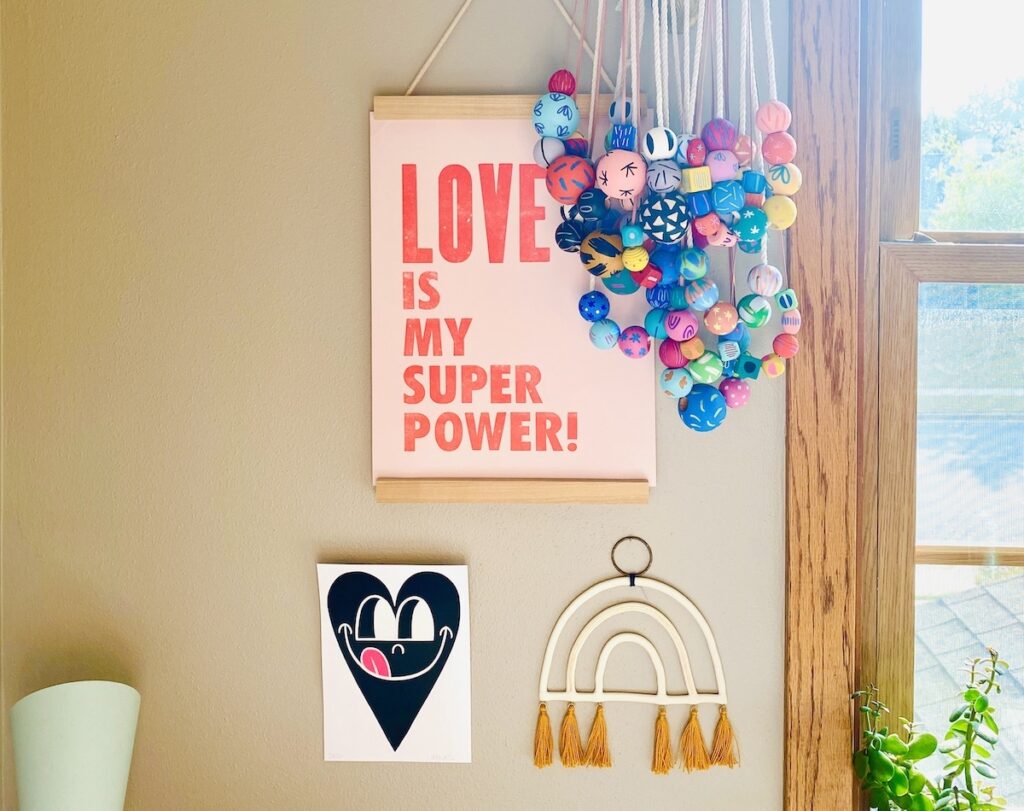
Once you are aware of the components that make up Social Emotional Learning, it’s time to make some art! Creating art that engages and strengthens your social and emotional muscles is a great way to make connections between feelings and creativity.
15 Art Lesson Ideas to Support SEL:
1. Partner Art Trade- Making something for someone else is a great way to encourage students to think about others. Have students create a small artist trading card, mini-masterpiece, or positive portrait of a friend. Intentionally taking the time to focus on creating something for another person specifically strengthens the social awareness and relationship skills of students.
2. Mantra Paper Beads- Have your artists think inward about what kinds of character traits make them special and strong. Using long strips of paper, instruct students to write and decorate each strip with a positive sentence about themselves. Then, tightly roll each strip of paper around a pencil, securing the strip together with glue or tape at the end. Once they have created a handful of positive rolled paper beads, students can make necklaces, banners, or decorations to remind them what makes them special.
3. Paper Chains- This classic lesson is a tried and true way to add positivity to the daily routine of a child. Using strips of paper, have students write a positive trait or a task to spread kindness. Then, loop the strips together to make a large paper chain. Each day, have students tear off a link to guide their SEL check-in for the day.
4. Scribble Art- Sometimes, we just need to “get the scribbles out!” Teach students how to hold one or many drawing tools and scribble all over a blank sheet of paper, letting their emotions come out on the paper. Artists can use the scribble paper to create something else, such as a sketchbook cover, bookmarks, or a decorative hanging banner.
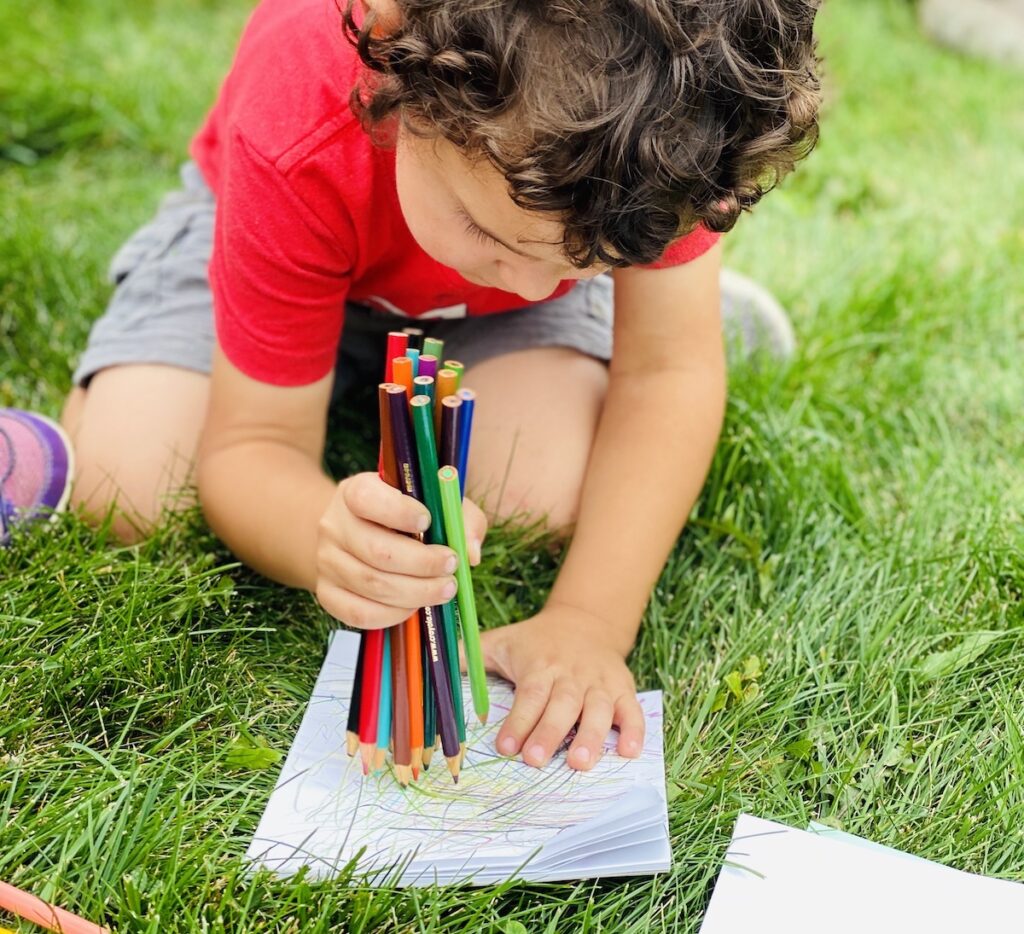
5. Circle of Control- Start by discussing situations you can or cannot control. Create a piece of art with a circle on it. Then, inside the circle, draw and write things you can control. Outside the circle, draw and write situations that you cannot control. This can help calm children and adults who experience anxiety during uncertain times.
6. Personal Mantra- Discuss specific words that encourage and lift you up. Have your artists decorate a poster, or even write on a window or mirror to be reminded of their daily positive mantra.
7. Repetitive Motion Projects- Incorporating the therapeutic nature of art, try having your students do repetitive drawing such as a Zentangle project or calming coloring.
8. “I am” Self Portrait- Having students reflect on their own amazing character traits will allow them to have a better understanding of what makes them unique. Using their own creativity, draw an outline of the profile of their face and write powerful statements about what makes them amazing.
9. Wrinkled Hearts- Have students cut out a paper heart then wrinkle it all up. Then, start a conversation about thinking first using the phrase, “Before you speak, think and be smart, it’s hard to fix a wrinkled heart.”
10. Intuitive Abstract Art- Let students create explorative abstract creations using inspiring artists. Model how to follow your heart to create abstract art.
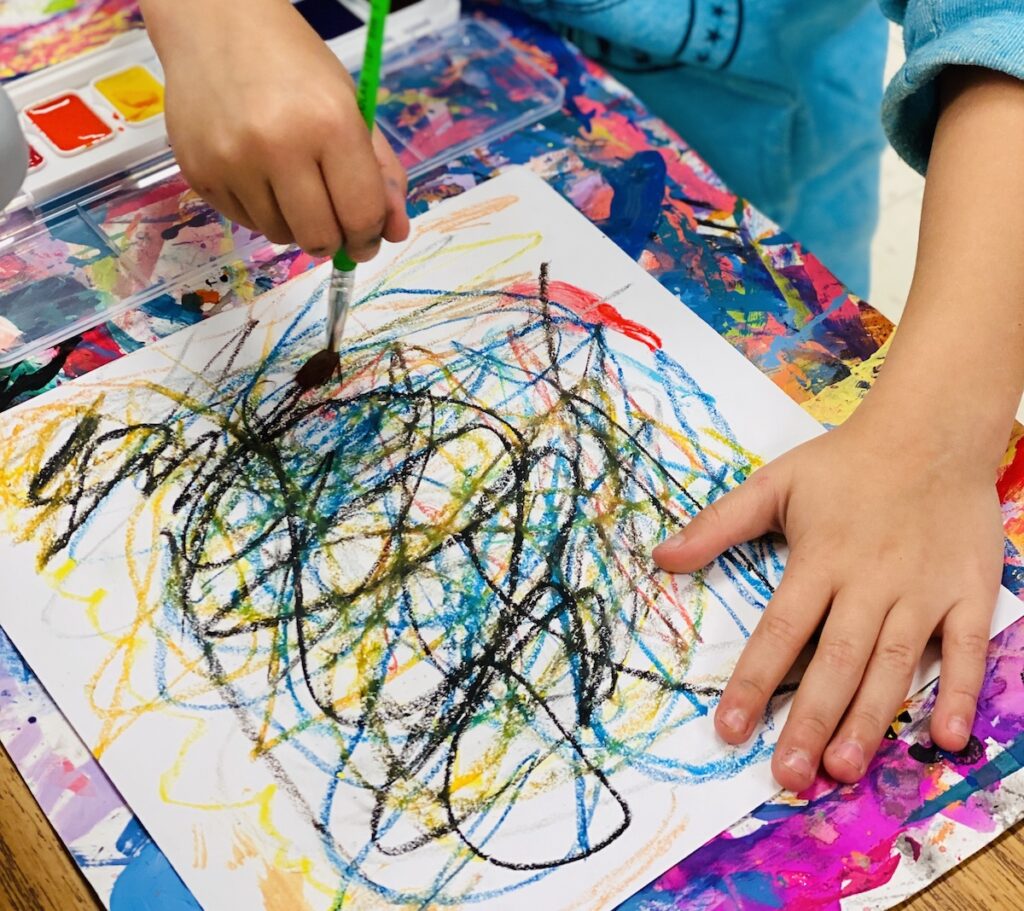
11. Emotional Color Wheel- Speak to students about the connection between colors and emotions. Ask: “How does the color red make you feel? What about blue?” Using these emotional connections, have students create an artistic representation of a color wheel or rainbow that addresses these emotional connections.
12. Vision Board- Have students create a vision board of things they want to do in the future. Suggest thinking ahead in a day, a month, and in years. Have students decorate their vision boards to reflect their goals and interests.
13. Hidden Hearts and Positive Phrases- Hearts are a classic symbol to represent feelings. Have students cut out paper hearts and write a positive phrase on each heart. Then, have students secretly hide their hearts around their living space to spread positivity and joy with the people around them.
14. Helping Hands- Encouraging students to think about others can make them realize how much control they have over the feelings of others. Have students trace or draw their own hands and reflect or write what their helpful hands can do for others.
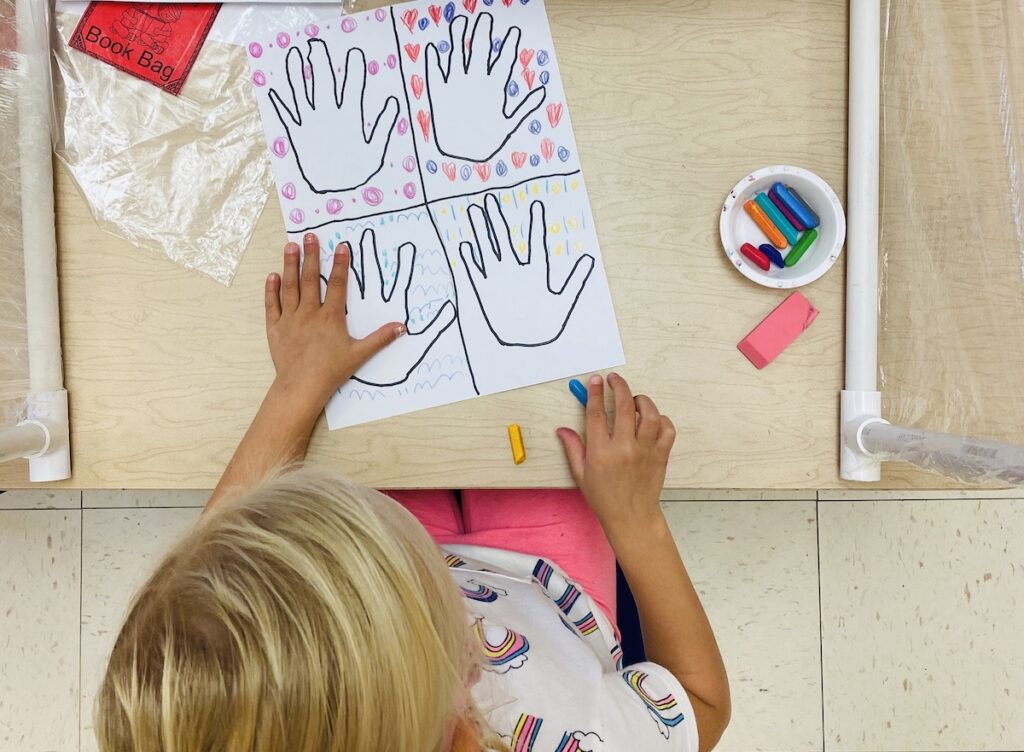
15. Calming Weaving- weaving has a naturally calming effect on students. Try having students create paper weavings with positive self-affirmations woven together. Or, if students are using yarn to weave, encourage them to make connections to the emotions tied with the colors they are choosing.
A great way to start a conversation about SEL is also by simply reading a book to your students.
25 Books to Read with Students to Address SEL:
1. A little SPOT of Anxiety by Diane Alber
2. Be You by Peter H. Reynolds
3. Charlotte and the Quiet Place by Deborah Sosin
4. Chocolate Milk, Por Favor by Maria Dismondy
5. Even Superheroes Have Bad Days by Shelly Becker
6. Exactly You! The Shape of Your Feelings by Sarah Krajewski
7. Grumpy Dinosaur by Michael Gordon
8. I Am Enough by Grace Byers
9. I Can Handle It by Laurie Wright and Ana Santos
10. I Think, I Am!: Teaching Kids the Power of Positive Affirmations by Louise Hay
11. I Will Be Okay by Laurie N. Wright
12. MySELF – Self Control & Self Esteem by Newmark Learning
13. The Boy with Big, Big Feelings by Britney Winn Lee and Jacob Souva
14. The Color Monster – A Story About Emotions by Anna Llenas
15. The Don’t Worry Book by Todd Parr
16. The Invisible String by Patrice Karst
17. There’s Nothing to Do by Dev Petty
18. Those Shoes by Maribeth Boelts
19. Train Your Angry Dragon by Steve Herman
20. Waiting is Not Easy by Mo Willems
21. We’re All Wonders by R.J. Palacio
22. What Should Danny Do? by Adir Levy and Ganit Levy
23. What Were You Thinking? by Bryan Smith and Lisa M. Griffin
24. When You are Brave by Pat Zietlow Miller
25. Worry Says What? by Allison Edwards
Playing interactive games with your students is also a great way to start conversations about their feelings. It can make the conversation more centered around fun and less stressful.
10 Games to Play that Explore SEL:
1. Anger Slayer- Kids Anger Slayer Board Game
2. Feelings & Choices Flip Book
3. Don’t Go Bananas Card Game
4. StrongSuit – The Tower of Self Esteem
5. Match Master Card Game—Social Emotional Learning Game
6. Emoji Stories Dice Game
7. Mad Smartz Card Game
8. Love Language: Kids Conversation Starters
9. Mindfulness Therapy Games: Mindfulness Cards
10. Totem: The Feel Good Game
Our connections to our students are essential during this unprecedented time of teaching. Strengthening our SEL curriculum is a great way to start building even deeper connections with our artists.
Return to Learn with The Art of Education University
What SEL lessons do you like to create with your students?
Why do you feel it is important to make SEL connections?
What do you feel may be an untapped resource in your school regarding SEL?
Magazine articles and podcasts are opinions of professional education contributors and do not necessarily represent the position of the Art of Education University (AOEU) or its academic offerings. Contributors use terms in the way they are most often talked about in the scope of their educational experiences.
